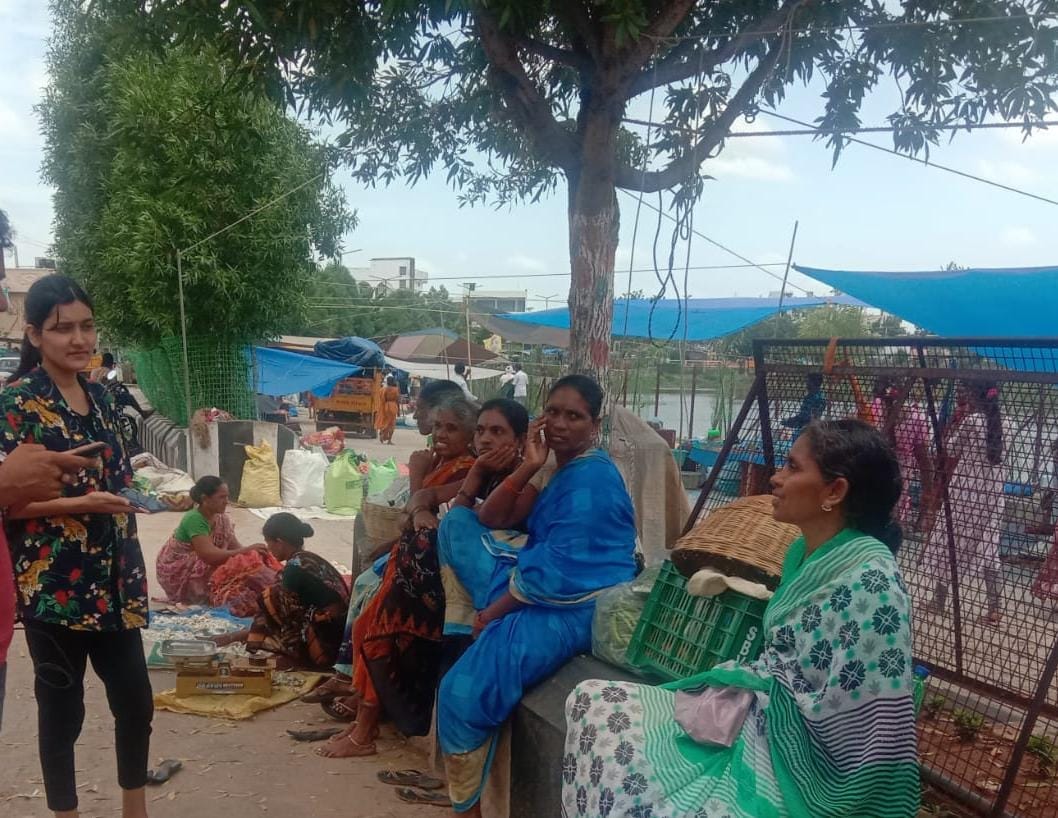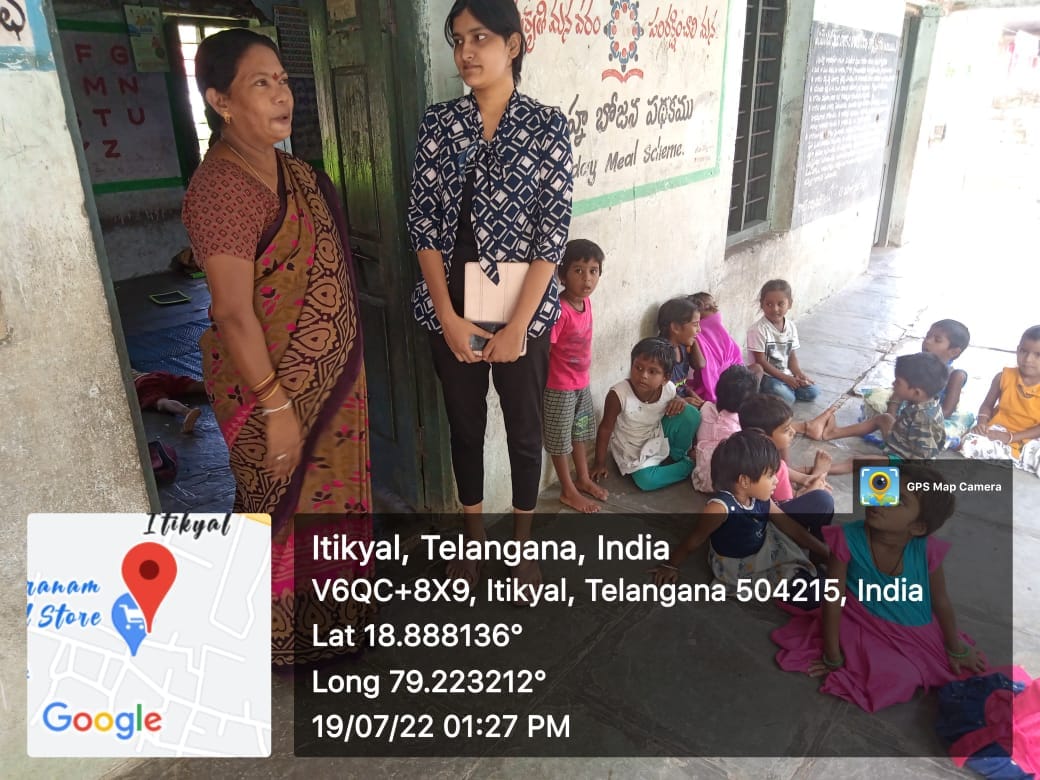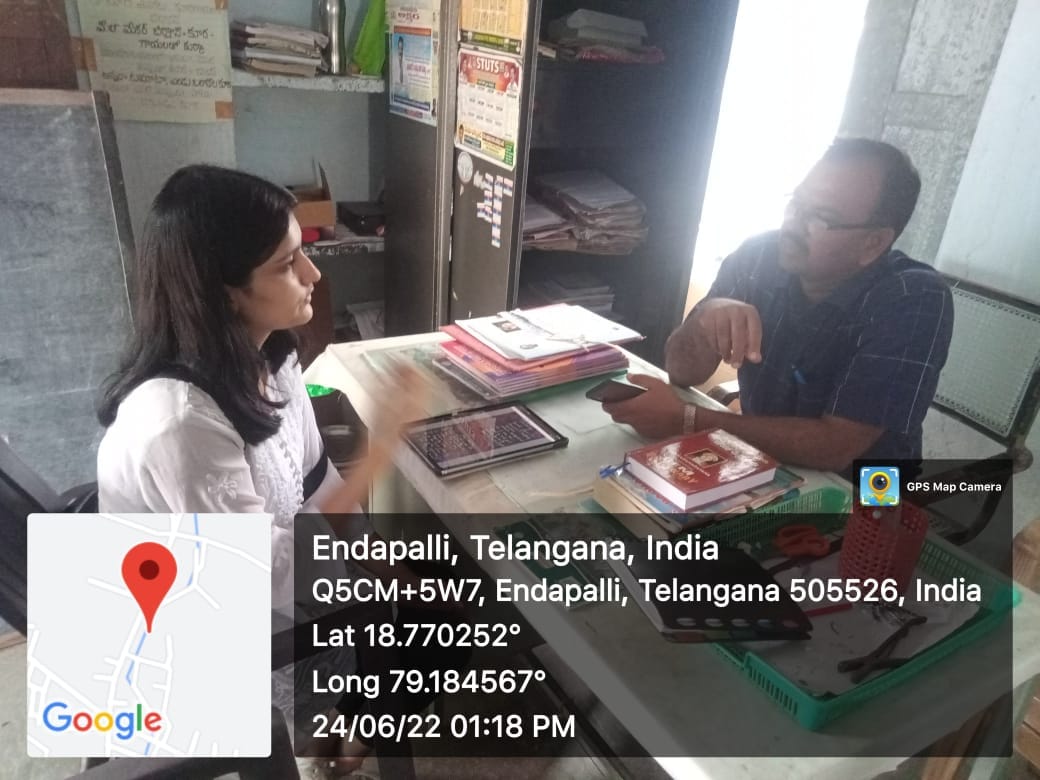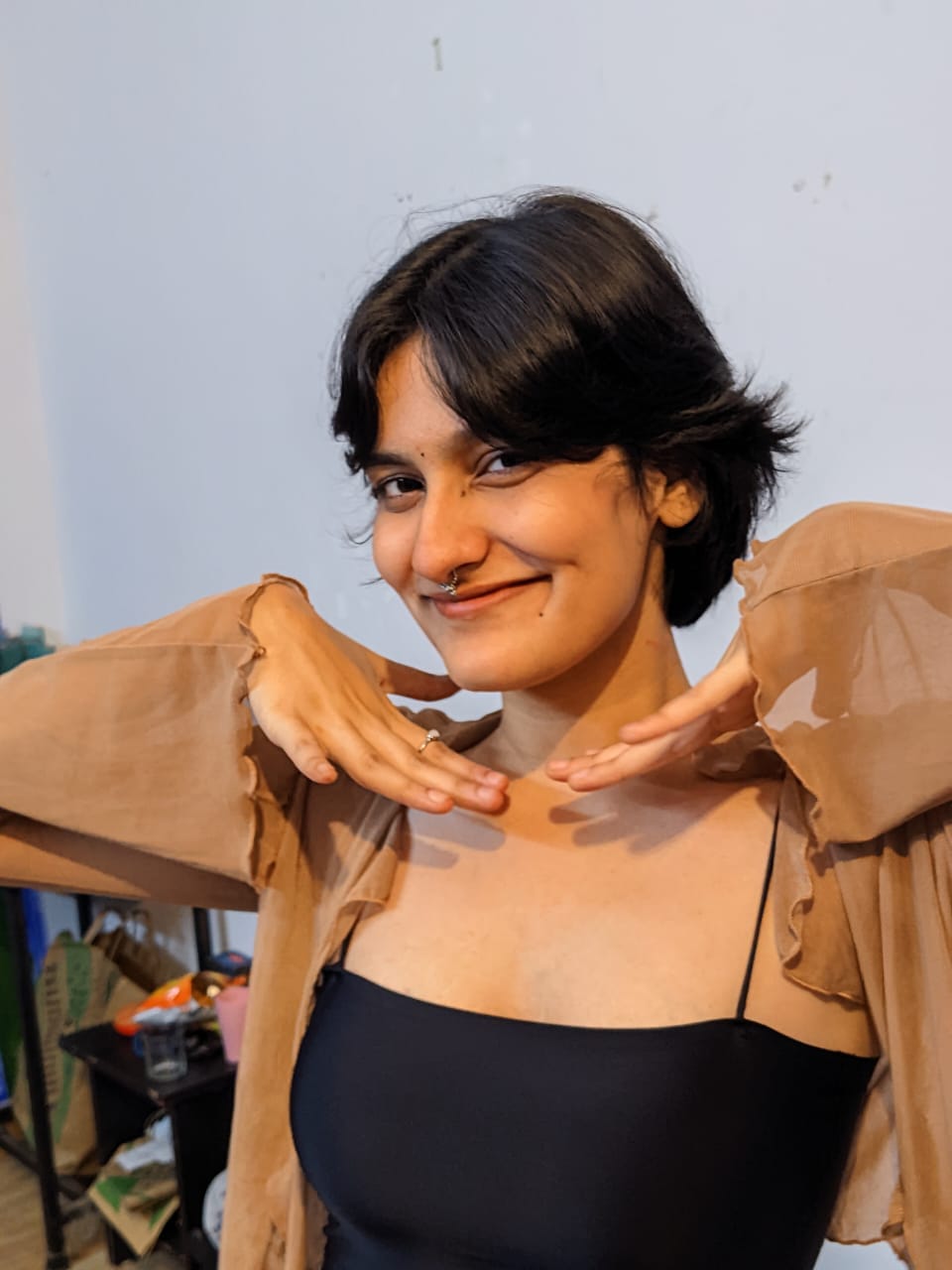Let me set the scene: I’m in the village of Kamand, Himachal Pradesh. Feet frozen, pen in hand, doing what political consultants do best: asking people how they vote. A woman flipping rotis looks at me and says, “Jo mere pati bolenge.” (Whatever my Husband says) Just like that. No hesitation. No guilt. Like she was ordering food for him at Haldiram's.
No shade to her. All shade to the system.
At that moment, something in me winced. It wasn’t just the expectedness of the answer; it was the indifference. The comfort with which she surrendered agency. And as I scribbled down her words, I knew I’d heard this line before in my line of work. In Telangana, Delhi, and West Bengal. Over cups of tea, outside polling booths, in classrooms, and chaupals.
According to the Election Commission of India, women’s voter turnout has, in fact, overtaken men’s in several states. 67.18% to 67.01% in 20191. But turnout isn't autonomy. A fingerprint on the EVM doesn’t equal a free will decision.
The average Indian woman:
● Runs the house
● Raises the children
● Casts her vote
● Still doesn’t get to pick her MLA
Voting? Yes. Thinking? Optional, if you’re married.
Act I: The Booth as a Stage
In a village near Mancherial, a 60-year-old woman told me, “We don’t understand these things. Politics is for men. We vote for who our eldest tells us to.”
Her hands were steady as she chopped vegetables. I asked her what she’d do if the candidate was corrupt. She smiled and said, “That’s his headache.”
Judith Butler, a feminist philosopher, described gender as performance; this was political performance. Rehearsed. Inherited. Without applause. A kind of democratic drag: wear the saree, stand in line, press the button. Not for yourself, but for the household, the lineage, the party your father-in-law once canvassed for. It’s not a moment of choice; it’s muscle memory in a salwar. She isn’t casting a vote; she’s preserving an ecosystem. The sari, the queue, the click, it’s all part of a script handed down like a recipe: measured, memorised, unquestioned. You follow it not because it makes sense, but because everyone else in your kitchen always has.
Link 1: https://www.eci.gov.in/EBooks/eci-atlas/index.html#p=92
Alternatively, Link 2 https://www.eci.gov.in/EBooks/eci-atlas/files/basic-html/page92.html
Most women I met were voters, yes. But rarely decide. Not citizens so much as couriers of male will. Loyalty, fear, duty; pick your flavor. But the dish is the same.
Act II: Logged In, But Still on Mute
Now imagine a government trying to fix this, and accidentally making it worse. Enter the 33% reservation for women in panchayats. Sounds feminist. But let’s watch it play out
In Galsi, I met a sarpanch who had never spoken in a gram sabha meeting. Her husband attended on her behalf. “I’m learning,” she said. “Maybe next term.”
She was the face. He was the voice. She did the signature, and he held the pen.
One man joked, “Humari pradhan Madam bahut padhi-likhi hain, teen saal se wohi toh file bhej rahi hain.” (Our madame chief is very educated, for three years she, herself, has been the one sending the files) Laughter all around. Including hers.
The pradhan-pati model isn’t just tolerated. It’s streamlined. According to a 2023 study by the National Institute of Rural Development (NIRDPR), a considerable number of the women elected to local bodies reported decisions being taken by their husbands or male relatives 2
Spivak, an Indian Literary Critic, asked if the subaltern can speak. In India, she files nominations. Then hands over the mic.
Act III: Boardrooms Smell Like Bros
Flash to Delhi. A party strategy meeting. Chai, stale samosas, testosterone. The air is thick with entitlement and the smell of printer ink.
A woman’s name comes up for internal leadership. The room pauses, not with anticipation, but suspicion. One man chuckles: “But whose puppet is she?”
Like she’s Alexa, waiting for a voice command. Like autonomy is unthinkable unless man-assigned.
I’ve seen men introduce women candidates with a pat on the back and a disclaimer: “New face, but solid backup. Her husband’s an old-time party man.” Translation: Relax, boys. She’s been vetted by patriarchy.
Even when we enter the room, we’re still someone's guest. The seat has a placard. The voice, a filter.
Theirs is called ‘strategy.’ Ours gets filed under ‘sentiment.’
And when we do have ideas, they’re called emotions. When we push back, it’s ‘disruptive.’ We’re handed the mic, but it’s never plugged in.
2 https://nirdpr.org.in/nird_docs/casestudies/cord/cord1.pdf
Act IV: The Bardhaman Intermission
But let’s not pretend resistance is impossible.
In Bardhaman, I walked into a home expecting polite smiles. What I got was political theatre.
The living room was a stage. A grandmother sat regally on a wooden cot, a retired teacher with a spine still straight from decades of discipline. Her daughter-in-law, apron-clad, nodded while ladling sabzi into bowls. Her son lounged nearby, phone in hand, rolling his eyes.
“Didi toh kaam karti hai, vaade nahi,” the grandmother declared, with practiced rhythm. “Modi bas bolta hai.”
(Didi doesn’t just promise, she actually works. Modi is all talk)
“You’re still stuck in 2011,” her son fired back. “What about corruption?”
“Woh sab logon ke paas hota hai,” the grandmother replied. “Lekin jab baadh aayi thi, Didi pair bhigo ke aayi thi.”
(That, everyone does. But when the floods came. It was Didi who wet her soles to come)
Argument over.
Banerjee wasn’t a leader; she was kin. The cousin who stood up to your toxic uncle at a family wedding. The woman you trusted to show up. The one who made her presence felt not through speeches, but through soaked hems and muddy feet.
Her appeal wasn’t abstract; it was embodied. It lived in memory. It lingered in gestures. Didi didn’t represent; she resonated. With women who were used to being overlooked, she became visible by being visibly present.
This wasn’t civics. This was a memory, re-election by affection.
And according to a 2021 Lokniti-CSDS survey, nearly 40% of women in Bengal vote as per their husband’s instructions. That’s not just a statistic, it's a quiet revolution waiting to happen. Flip the lens and you'll see that nearly 60% of women here cast their votes independently of their husbands.3
Sometimes, all it takes to rewire political submission is visibility. Representation isn’t just symbolic, it’s instructional. It whispers: You can speak. Even here.
Act V: The Algorithm of Obedience
Meanwhile, on Instagram, a different drama unfolds.
Enter the tradwife, the new online trend that romanticises domesticity. Hair curled. Apron cinched. Ring-light ready.
She bakes. She submits. She captions it with Scripture. The idea is that being apolitical is sexy. Her bio says “anti-woke.” Her grid? Soft-pink propaganda.
3 https://www.lokniti.org/media/PDF-upload/1622695848_3736100_download_report.pdf page 6
Scroll long enough on Instagram and you’ll find reels about how feminism ruined families, how ‘real women’ serve their men, and how politics is a man’s burden. The tradewife is curated, edited, and unbothered.
But here’s the thing: the more you strip personal life from politics, the more invisible women become.
If everything is about aesthetics, nothing is about agency. A million follow-counts don’t add up to a single political decision that puts food on your table, or a school in your village.



Act VI: When Women Echo Men
And what of the women who speak, but only in borrowed tongues?
In Bidhannagar, a young woman told me she supports a party because “they build temples.”
I asked about the ration, water, and school. She shrugged: “Ghar ke bade bolte hain woh sab baad mein.”
(The elders say all that is secondary)
In 2022, the Association for Democratic Reforms reported that women voters listed inflation, water access, and healthcare as their top concerns. But these concerns rarely make it to campaign speeches, not because they’re unimportant, but because they’re inconvenient. They don’t fit into the temple vs. mosque binary. They can’t be resolved with a single religious slogan or televised yatra. When votes are chased through religion, not reason, real issues get left at the altar. Structural demands sound too secular, too grounded, too feminist. And political parties aren’t always prepared to answer questions that can’t be wrapped in saffron or green, especially when they come from women.
So they echo the loudest voice around them. WhatsApp forwards. Uncle takes. News anchors shouting over facts.
Even the boldest voice at home might cast the quietest vote.
Final Vibe Check: Kamand, Again
Back in Kamand, the roti has burned. The woman laughed. I’ve scribbled her quote. “Jo mere pati bolenge.” (Whatever my husband says)
I wonder what it would take for her to say, “Jo main chahoon.” (Whatever I wish)
A woman can vote, sure. But can she choose?
So next time someone tells you who to vote for, ask them: why are you so obsessed with me? Then vote like you’re starring in your biopic.
Cos, Spoiler: You are.

About the author: Ishani Dubey is a 22-year-old strategy consultant, anthropologist in training, and chronic overthinker of the world’s injustices. She has helped run election campaigns, is a founding member of a grassroots NGO, AINA Foundation, and still somehow finds time to chase deadlines and decode power structures, often simultaneously. A Hansraj alum, she oscillates between policy briefs and protest poetry, all while trying to challenge the patriarchy before lunch. Her work lives at the intersection of gender, power, and public life, and occasionally on Google Docs at 2 AM.
Support the author :
We're an independent magazine that is finding its footing, and here's how you can help- Shatter the illusion of capitalism with one contribution at a time and consider supporting this writer who made you laugh/cry directly : ishanidubey25@okicici


Comments